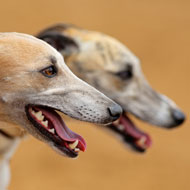New flying frog discovered
A new species of flying frog was discovered in a lowland forest near Ho Chi Minh City, according to a report published in the Journal of Herpetology.
Jodi Rowley, an amphibian biologist at the Australian Museum in Sydney, and lead author of the study came across one of the frogs whilst hiking in Vietnam. So far just five individuals have been found in two areas of the forest.
The newly discovered, 9 centimetre-long creature is one of around 80 types of flying frog, a group known for its ability to "parachute" through the trees due to its webbed feet and other aerodynamic adaptions.
According to Rowley, this particular type of frog have "huge hands and feet that are webbed all the way to the toepad." She adds, "the females are larger than the males [with] flappy skin on their forearms to glide."
Despite the fact that the frogs were found less than 60 miles from an urban centre containing over 9 million people, they have escaped discovery until now. Rowley says on her blog this is due to the fact that they spend most of their time in the canopy.
Though they have only just been discovered, the frog's habitat is under threat from development near Ho Chi Minh City. Lowland forests are among the most threatened in the world, often chosen for logging and development due to their accessibility to people.
"Unfortunately this species, like many others, is under great threat from ongoing habitat loss and degradation," Rowley says. However, she adds that the frogs could probably tolerate small amounts of disturbance, as long as they have temporary pools and large trees.
Rowley has named the new species 'Helen's flying frog' in honour of her mother, who has "steadfastly supported her only child trekking through the forests of Southeast Asia in search of frogs."



 The Greyhound Board of Great Britain has published new vaccination guidance, with all greyhounds registered from 1 January, 2027 required to have the L4 leptospirosis vaccination, rather than L2.
The Greyhound Board of Great Britain has published new vaccination guidance, with all greyhounds registered from 1 January, 2027 required to have the L4 leptospirosis vaccination, rather than L2.